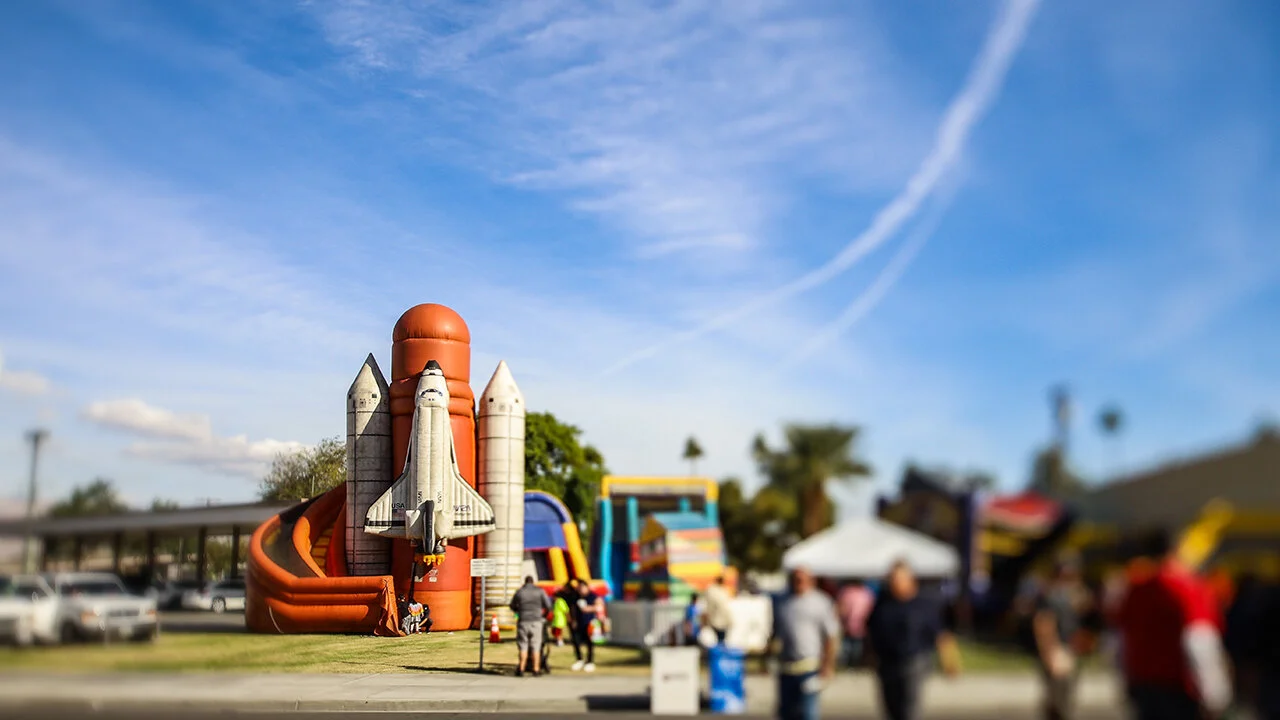Shrink Your World With Tilt Shift Photos and Videos!
/My last video showed you how to make a scale model look life-size, and now we’re going to make life-size objects look like scale models- why? Because we can. And because I borrowed a tilt-shift lens.
Many of us are familiar with “tilt shift” filters in different software apps like Instagram and Snapseed, but the technique was originally developed for traditional film photography almost 50 years ago.
I borrowed a 24mm Rokinon tilt shift lens for this video, and it seems to be pretty decent, but it’s also the only tilt shift lens I’ve ever used. My goal in making this video isn’t to talk about or review specific pieces of gear, but to explore techniques and effects that are fun to learn.
Tilt shift lenses do two things: tilt and shift (shocking, I know). These small changes make a BIG impact by changing the angle of the plane between the lens to the camera’s sensor.
There are a lot of instances when tilt shift can come in handy. Tilt shift lenses let you take architectural photos without any distortion, you can become extremely selective with focus to direct the viewers attention to a specific part of an image, and even do some pretty unique effects like giving the appearance of filming directly in front of a mirror. (in this instance the camera was positioned just outside of the mirror’s view and shifted to give the perspective of looking into the mirror).
Of course the most commonly seen use of tilt shift photography is using the altered plane of focus to affect the scale of your subject. When photographed from from a distance, and especially from a high angle, people, buildings, and even entire towns begin to look like pieces of a scale model diorama.
Where tilt shift photography takes on a whole new dynamic beyond still photography is the fact that most cameras made now are capable of shooting photos AND video. Tilt shift video adds an entirely new layer of creative options to your work, and even though you definitely don’t want to overuse it, it is an incredible tool to have at the ready. You can see this technique used by professional filmmakers like David Fincher in The Social Network.
I’m not suggesting you run out and spend money on a tilt shift lens, but it is neat to see where the technique originated and how it can be used to achieve specific results.
In all honesty, software filters can do a great job of replicating the tilt shift effect, and they’re SUPER easy to use. So there’s no reason NOT to just use your phone to take a photo, play around with tilt shift, and then shrink your world to look like a scale model.
Ultimately, learning to use a traditional tilt shift lens can just help you build your skills as a photographer or filmmaker, and it’s also just a lot of fun. Fun is good.


